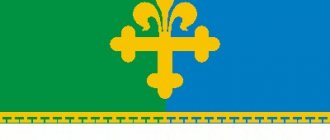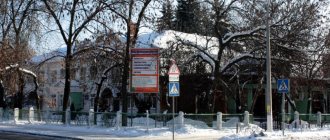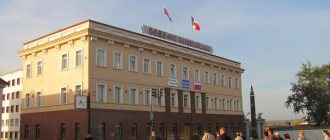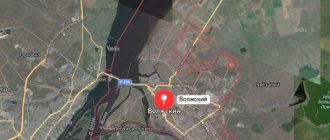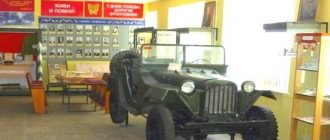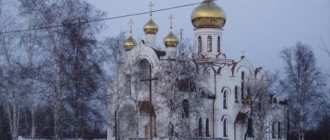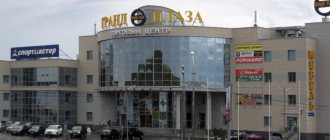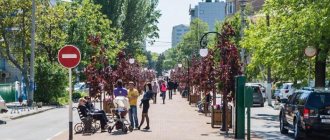Volgograd is a large Russian city on the Volga in the southeastern part of the country. Awarded the title Hero City for the courage and bravery of its residents during the defense during the Second World War. The Battle of Stalingrad and the sculpture “The Motherland Calls” from the pages of the history of Volgograd will forever remain in our memory.
I suggest starting your acquaintance with the amazing Volgograd with the history of its name.
- From 1555 to 1925 - Tsaritsyn
Oddly enough, not in honor of kings and emperors, but along the Tsaritsa River (Turkish “Sary-Su” - yellow water), at the confluence of which with the Volga there was an island - on it the ancient Russian city of Tsaritsyn was founded.
- From 1925 to 1961 - Stalingrad
The name, of course, is in honor of Stalin. But something else is noteworthy: the city bore this name for less than 40 years, but became famous throughout the world precisely as Stalingrad. The Battle of Stalingrad, the defense of Stalingrad, the battles of Stalingrad...
- 1961 to present - Volgograd
Too many tragic things were associated in the history of Russia with the name Stalin and the name Stalingrad, so the new name of the city was as neutral and calm as possible Volgograd - a city (city) on the Volga.
Interesting facts about Volgograd:
- the main attraction of the city is the sculpture “The Motherland Calls” - this is the central part of a triptych of monuments with a sword - the first Magnitogorsk (Worker hands the sword to the Soldier), then Volgograd (Mother raises to fight) and, finally, Berlin (Warrior-Liberator lowers the sword) ;
- Volgograd has a unique architectural feature - independent streets hidden in a quarter;
- The city was originally located on an island, then it was moved to the left bank of the Volga.
Now I propose to go to geography and find out where the city of Volgograd is located.
General facts
Partially the center of the hero city is 10-12 meters below sea level. And the Volgograd hydroelectric power station is the largest in Europe. The longest street in Russia is located in Volgograd - this is the 2nd Longitudinal Highway. Its length is 50 km, and in fact, calling it a street is not entirely correct, because it is a highway where one street simply turns into another. But hardly anyone will argue with the fact that Volgograd is the longest Russian city - it stretches along the banks of the Volga for more than 100 km.
The length of the bridge across the Volga is 7100 meters, it is the fourth longest among all Russian bridges. The famous monument to Lenin, installed on the embankment in the Krasnoarmeysky district of the city, is listed in the Guinness Book of Records due to its 57-meter length.
The Mamayev Kurgan memorial complex is one of the Seven Wonders of Russia. But this does not prevent Volgograd from bearing the status of the poorest of the Russian cities with a population of over a million, with the lowest level of wages.
Central embankment (Embankment of the 62nd Army)
The central embankment was named in honor of the 62nd Army - the operational unit of the Workers 'and Peasants' Red Army, which particularly distinguished itself during the defense of Stalingrad.
This landmark of Volgograd is a center of attraction for residents and guests of the city. Various events are held here; in the warmer months of the city there are cafes and numerous attractions. During a leisurely walk you can admire beautiful views of the Volga.
The embankment itself is divided into two levels. One is adjacent to urban space - residential areas and parks, the other is located close to the water. Along the entire embankment there are flower beds, monuments and fountains installed.
Famous monuments on the Volgograd embankment: a monument dedicated to the bomber pilot V. S. Kholzunov; armored boat "Gasitel"; monument to sailor heroes; monument to the repressed Cossacks; monument to Saints Peter and Fevronia.
A little history
Museums appeared in Volgograd “with the light hand” of Peter the Great, who during his visit presented the townspeople with his cap and cane as a gift. They became the first museum relics of the city.
The first tram lines appeared in Volgograd, which during the Russian Empire was called Tsaritsyn. By the way, this name did not arise at all as a result of an attempt to dedicate an entire city to the royal person - it was just that the Turkic words “Sary-chin”, meaning a beautiful or yellow island, were somewhat distorted in Russian. The very first enterprise that appeared in the city in time immemorial was a mustard factory.
During the uprising of Stepan Razin, his troops first captured Tsaritsyn, although the gates were opened to the ataman by the archers, most of whom went over to his side. But during the rebellion of Emelyan Pugachev, the situation was the opposite - Tsaritsyn remained the only city that did not surrender.
What plants grow in the Volgograd region?
Flora of the Volgograd region
Forbs of astragalus, sage and other plants
. In spring, the steppe is covered with carpets of red and yellow tulips, later it will become dark purple and intoxicating with blooming sage, and then the endless plains will turn gray with feather grass.
Interesting materials:
What date and month is Medical Worker Day? What date is Medical Worker's Day? What date is Medical Worker's Day in June? Which accounting entry reflects the calculation of wages to employees of primary production? What should be the lunch break in a 12 hour work day? How long must you work to get a loan? What should be the minimum area per workstation for PC users based on flat discrete LCD plasma screens? What should be the duration of continuous work on a personal computer without a regulated break? In what form is the employer obliged to familiarize the employee with the results of a special assessment of working conditions at his workplace? What is the work schedule for truck drivers?
The Second World War
The Battle of Stalingrad, which lasted 200 days, is considered the largest land battle of the Great Patriotic War. During this time, about a million people died. Of the 450 thousand Stalingrad residents who lived in the city before the war, only 32 thousand people remained alive. For another six months after the end of the Battle of Stalingrad, the corpses of people and horses were buried, which littered the city streets.
Due to bombing during the Great Patriotic War, the city was almost completely (90%) wiped off the face of the earth, as a result of which there were even proposals to rebuild it in another place, but the local administration rejected this idea and the city, then called Stalingrad, was scratch was revived in its original place.
The legendary “Motherland” at the time of its construction was the tallest monument in the world.
Museum-reserve "Old Sarepta"
This amazing attraction of Volgograd attracts more and more tourists every year. But it’s worth starting with a little historical background.
At the invitation of Catherine II, a colony of Herrnhuters settled in the Astrakhan province - evangelists who actively carried their religious views to the masses. In Russia, no one interfered with their activities and soon the small colony turned into a fortified city.
The Herrnhuters were the first in the Lower Volga region to sow mustard and plant potatoes. They built a mustard processing plant, a scarf factory, and a tannery. In Sarepta they made watermelon beer, baked gingerbread and made soap. They were famous for the quality of their education and medicine far beyond the borders of the colony.
The Herrnhuters maintained a high level of economy and culture until the 20th century. Due to the revolution and repression, Sarepta fell into decay.
Its revival began in the 80-90s of the 20th century. In 1989, the Old Sarepta museum-reserve was created on the basis of the colony. It includes 26 surviving buildings, including a church, a pharmacy, a wine cellar, and a trading store. There is even the only Mustard Museum in the country.
Visitors to this Volgograd landmark will be introduced to the life and religious teachings of the Herrnhuters, taught how to squeeze mustard oil, and guided through the ancient Sarepta dungeons.
City on the Volga and modernity
The heroic past of Volgograd attracts tourists from all over the world, this is especially noticeable during the May holidays. Since most of the attractions are concentrated in the center, here you can find many hotels, hotels and guest houses for every taste and budget.
However, the leading role in the life of a modern city is still occupied not by tourism, but by industry. The city has developed mechanical engineering and defense production, metallurgical production, construction, chemical and food industries, and energy.
Industry of Volgograd
In addition, Volgograd is a port of five seas. The Volga-Don Canal united the southern Black, Azov and Caspian Seas with the cold Baltic and Northern Seas, thanks to which the city plays an important role in the development of trade relations and the economy of the South of Russia.
How to get to Volgograd?
The location of the city on the Volga is very convenient - from any city in Russia it can be reached by air, land and water transport.
By plane
Volgograd International Airport allows direct flights from Moscow, St. Petersburg, Yekaterinburg, and Surgut. Residents of other settlements, unfortunately, will have to change trains in Moscow or Yekaterinburg. From abroad, direct flights can only be taken from Yerevan. You can create a flight route to Volgograd in the form below.
By train
The Volgograd-1 railway station receives a huge number of trains, both direct (from Moscow and St. Petersburg) and passing (from Saratov, Rostov-on-Don, Astrakhan, Adler, Kislovodsk, Krasnoyarsk, Yekaterinburg, Chelyabinsk, etc.).
Trains also come from abroad, mostly from our southern and western neighbors: Baku, Varna, Dushanbe, Kharkov, Tashkent, etc. The schedule and ticket prices can be found in the online ticket booking system.
By car
If you want to drive your own car, there will be no problems with this, except for the poor quality of the roads. But even in such a journey you can find its advantages, and an extensive network of roads will contribute to your decision. You can go from: Moscow, Astrakhan, Rostov-on-Don, Saratov, Elista, etc.
An example route from Moscow to Volgograd
By bus
Buses arrive either at the station square near the railway station, or at the nearby bus station, i.e. In any case, when you get to your destination by bus, you disembark in the city center.
The most common flights: from Moscow from Paveletsky or Kazansky railway stations, from St. Petersburg, Rostov-on-Don, Gelendzhik, Kyiv, Dnepropetrovsk, Astrakhan, Voronezh, Tambov, etc.
Battle of Stalingrad
The Nazis moved across the country by leaps and bounds. Stalingrad was an important strategic point for their offensive.
The days from July 17, 1942 to February 2, 1943 were a terrible time for the city and for the entire country, called the Battle of Stalingrad. According to official data, more than a million Soviet people died in those days. Among them were old people, women, and children.
People died not only in the battle - the city was subjected to air raids, as a result of which a huge number of civilians died. Although it is difficult to call those people civilians. Everyone who could hold tools in their hands, young and old, came out to build protective structures in the destroyed city. Despite the devastation, the factories continued to operate, producing new tanks and shells. Those who could, went to the machines.
The command sent more and more military units to the Stalingrad Front. Relentless statistics show that the average life of a soldier on the Stalingrad lines was 24 hours.
They fought for every street, every house. The Nazis joked bitterly, calling that war on the streets of Stalingrad a “rat war.”
The real massacre took place behind the highest point near the city - Mamayev Kurgan. From time immemorial, the enemy tried to capture this important strategic facility. From it you could see the entire city and its surroundings for many kilometers at a glance.
Particularly fierce battles took place in the areas of the artillery and tractor factories, which all this time continued to produce military equipment, which was immediately sent into battle.
February 2 is the day of the official victory of the Soviet army over the Nazis in the Battle of Stalingrad. This day became a turning point for the outcome of the entire war. In Germany, mourning was declared over the defeat at Stalingrad.
The city of Stalingrad suffered terrible battles. Every resident of the city and all of Russia knows what the name of the place is now that perpetuates the memory of the defenders who died here. On Mamayev Kurgan stands a majestic monument to the heroes who gave their lives in that battle.
In the post-war years, the city quickly began to recover, acquiring its past grandeur and beauty. Destroyed buildings, plants, factories were revived, and new ones were built.
